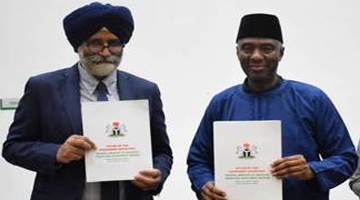Depreciation as a tool for profit and loss manipulation!
FEBRUARY 14, 2005
By Naresh Minocha, Consulting Editor
THE Indian Companies have enjoyed tremendous freedom to periodically adjust their profit and loss account by tinkering with the way they write down the useful value of assets.
Tax planning-oriented companies normally increase the depreciation provision to reduce the income tax burden. The companies that do not mind paying taxes decrease depreciation to increase taxable profit.
Take the case of Mahanagar Telephne Nigam Limited (MTNL). It has suffered 58.36% decline in net profit to Rs 2009.82 million in third quarter of current financial year from Rs 4826.91 million in the corresponding period of previous year.
The company has explained the steep fall in net profit to change in the manner in which it depreciated its assets in the third quarter of 2003-04.
In the footnotes to the results, MTNL says: ''The reason for the abnormally higher profit in 3rd quarter of previous year is that, the company changed the useful life of its apparatus & plants & cables, lines and wires with effect from 1 April 2003."
The company reduced the depreciation rates for all these assets, resulting in decrease in total depreciation by Rs 2913.01 million. It has not explained why it had to lower the depreciation rates. It has presumably done this within the framework of the law.
The Companies Act, for instance, allows companies depreciate assets by two methods – straight-line method (SLM) and written down value (WDV) method.
Take now a contrary instance where the company increases depreciation charge to reduce the tax burden. Nahar Industrial Enterprises Limited (NIEL) changed the method of charging depreciation in respect of weaving unit-II, processing and garment units from SLM to WDV method during 2003-04, resulting in enhanced depreciation charge of Rs 3769.79 lakh. Thus, the total depreciation & non-cash expenditure increased to Rs 6229.74 crore in 2003-04 from Rs 3297.87 crore.
Like MTNL, many other companies tinker with depreciation year after year, leaving the investors in puzzle about their true financial health. Some companies do not change the method of depreciation but regularly revalue their assets, resulting in additional charge of depreciation.
In its third quarter results of current financial year, Alembic Limited revalued some items of plant and machinery on a selective basis rather than for a class of assets. The company's auditors have pointed out such selective application of revaluation is not in conformity with accounting standard 10 on ‘accounting of fixed assets' prescribed by the Institute of Chartered Accountants of India even though the accounting per se of such revaluation is as per accepted accounting practice.
Then, there are companies that seek special permission from the Department of Companies Affairs (DCA) to change the period during which they would charge depreciation.
Loss-incurring Noida Toll Bridge Company Limited, for instance, holds DCA's approval to not charge depreciation on Delhi-Noida toll bridge for three years beginning 2003-04.
In 2003, DCA had permitted Kesoram Industries Limited in 2003 to defer making provision for depreciation of its two captive power plants of cement section and certain other fixed assets for 2001-02. DCA allowed the company to recoup the same amount in 11 years, that is, the remainig life of the assets.
Gontermann Peipers India Limited also walked with a similar approval from DCA in 2003.
Another interesting case in point is The Dharmsi Morarji Chemical Co. Limited. The company effected certain changes in depreciation and deferred tax liability. The puzzling changes in accounting of these two provisions led the company to file revised income tax results for 1999-2000 (income tax assessment year 2000-01).
These instances show that the Companies Act gives much leeway to companies to manoeuver in preparation of accounts and disclosures. Certain companies keep hopping from SLM to WDV and vice versa. Other companies go for frequent revaluation of assets and accordingly re-calculate the depreciation for previous years.
It appears the spirit of flexibility conferred by the Accounting Standard (AS6) issued by Institute of Chartered Accountants of India is not respected by certain corporates.
AS 6 says: "The method of depreciation is applied consistently to provide comparability of the results of the operations of the enterprise from period to period. A change from one method of providing depreciation to another is made only if the adoption of the new method is required by statute or for compliance with an accounting standard or if it is considered that the change would result in a more appropriate preparation or presentation of the financial statements of the enterprise."
As regards revaluation, "In case the depreciable assets are revalued, the provision for depreciation is based on the revalued amount on the estimate of the remaining useful life of such assets."
There also instances where companies have wrongly classified assets such as hotel being treated as a plant with a view to charging higher depreciation than permissible, leading to disapproval by the Income Tax Department.
Comptroller and Auditor General (CAG) has also detected instances of the Department allowing companies to get away with wrong depreciation claims. In its report numbered 12A of 2002 on direct taxes, CAG has stated that its test check of records revealed mistakes in allowance of depreciation in the assessment of 43 private hospitals and nursing homes, resulting in short levy of income tax of Rs 70.60 lakh.
This may well be a proverbial tip of tax-evaded iceberg. Income Tax Department, statutory auditors of the companies and CAG perhaps need to be more vigilant on misuse of lax legal framework for depreciation. Will FM look into it?
| 













